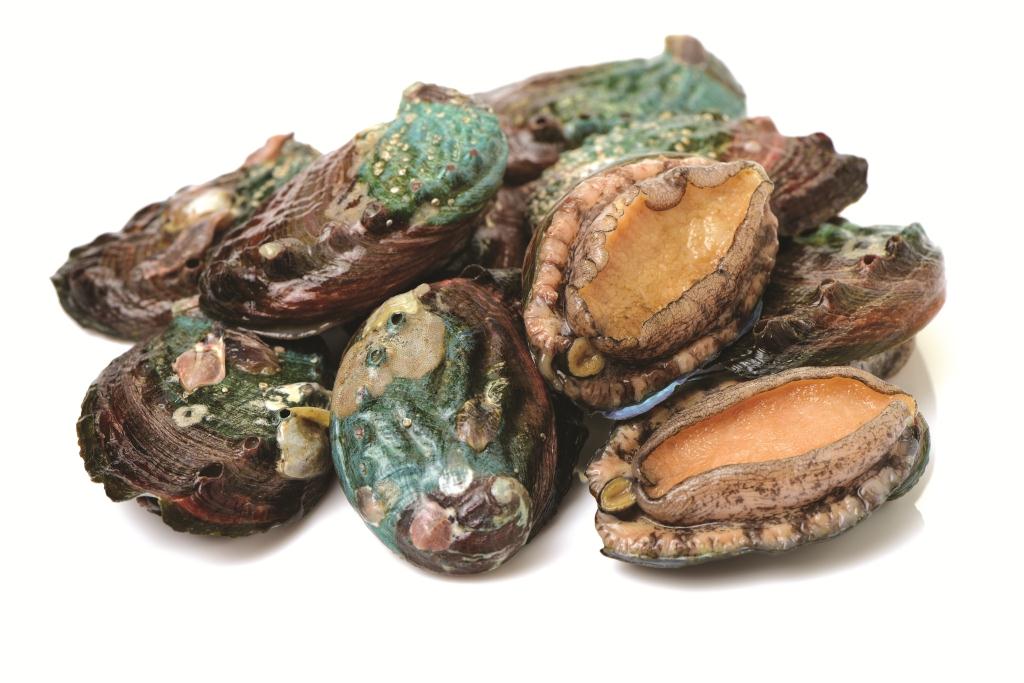It started 20 years ago, when farmers from a small seaside town in Africa took a sea snail slithering through the swaying kelp forests under the ocean and tried to farm it inland. They grew this small-town idea into a thriving $35.3-million aquaculture business. This is the story of abalone in Africa, reared on the shores of Hermanus, 120 kilometers southeast of Cape Town, which ends up on dinner plates in Hong Kong.
“We are lucky our species has got a very good taste, a very good texture. Our processing techniques are of a very high standard and we are able to compete with the best.”

So says Werner Piek, Executive Marketing Manager of Abagold, a man who grew up eating abalone long before it was farmed in Africa.
“I knew abalone since I was very small. We had a holiday house in Franskraal, just past Gansbaai. In those days there were no wetsuits, or flippers or anything like that. You had your pair of old tekkies (trainers), goggles and a screwdriver and you would go diving. In those days we were allowed to take five abalone per day. Nice big ones. On Saturdays we would go diving and bring back the abalone and cook it in a poitjie [slow cooked stew]. That was our weekend.”
Loading...
In years of jet-setting between Hong Kong and South Africa, the 50-year-old Piek has adjusted his palate. Nowadays the man who started working as a factory manager in 2006, when abalone began to boom, prefers dried abalone, cooked with Asian flair.
“That’s a South African style of doing [abalone]. Asians have a very different way of eating it. It has to be whole abalone. They don’t like it minced. It’s cooked with a Chinese-style sauce, served with a piece of broccoli. They are looking for the toughness and the chewiness. South Africans want seafood with garlic butter.”
Like a good wine, abalone is as a varied as the grape. With over 100 species, of which 15 are commercial, abalone has different characteristics.
“What is the price of red wine? It depends, you have the pairing; where it comes from; what the taste and texture was; and the method it was made. From a world perspective French wine is considered the best, with abalone – its Japanese. It has the longest history of export to our main market. South Africa has been in the business for 50 years, but we have only been farming abalone for the last 15 to 20 years,” says Piek.

Abalone is eaten during Chinese New Year or during the Dragon Boat Festival. It is a high-end product, used as a symbol of wealth. It isn’t, despite what people believe, an aphrodisiac.
“It is a famous gift is to give your potential mother-in-law, as a gift on Mother’s Day, to show respect. So it’s definitely not an aphrodisiac, no one wants to give their mother-in-law that kind of a present,” says Piek.
There is plenty of room to grow. The South African abalone farms account for 1% of the 120,000 tons of abalone produced in the world.
“You can’t go to Hong Kong and miss it. The branding is everywhere, on taxis, on billboards and on buildings. With all my experience I prefer the very high-end dried abalone. It produces all the flavor of the abalone. It’s not easy to prepare, it takes three to four days to cook it,” says Piek.
From the 1950s, the abalone industry went global and Hermanus was right in there; all because of canning technology making export into Asia easier.
At the time, South African commercial divers were hauling 2,000 tons per year from the seabed. Authorities realized this wasn’t going to last and introduced something called total allowable catches (TAC), restricting catches to 600 tons by 1970.
“1994 was at that stage that poaching started to pick up in South Africa. The policing around the coast became a lot more lax. People felt more freedom and felt they could take out of the sea, whereas before the police would do horrible things to them if they were caught. Also around that period, South Africa became a lot more international and the Chinese who came saw that there was abalone.”
The doors to China were open and the small-time abalone pickers tried their hands at farming. The latest data released in the Aquaculture Yearbook 2014, by the Department of Agriculture, Forestry and Fisheries, showed businesses in the seas were on the rise. In 2013, the value of the aquaculture sector, based on sales of products, grew by 38.1% to $46.5 million. Abalone accounted for $35.3 million.
A drop in the ocean when compared with South Africa’s gross value of agricultural production which was almost $12.5 billion in 2013.
Gavin Johnston, head of Aquaculture Consulting and Management Services, who has built aquafarms over the last 20 years, says that abalone is one of Africa’s great success stories.

“Abalone is a niche within a niche. It’s the high-end of society that wants our species. There is lots of different species. The market is complex. The price can fluctuate by as much as 200 percent depending on how it was dried and its slight color differences. Guys are paying $400 a kilogram.”
“It’s an interesting market, with a capacity of 80,000 tons a year. [South Africa is] currently producing 1,200 tons. We are a small fry that supplies a small portion, but it’s got a high value on the market. It’s going to be interesting to see when we there are more farms on the market,” says Johnston.
The small crustacean in the kelp forest is going to become an even bigger money maker as the years go on. Piek expects that by 2020 South Africa will produce 3,000 tons a year. It seems the dinner plates of Hong Kong can’t get enough.
Loading...
